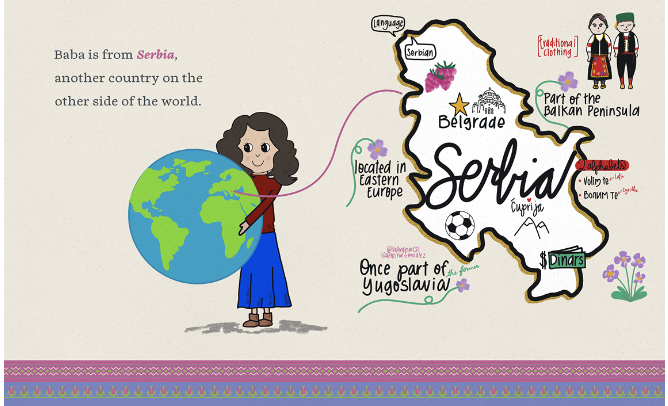

When you were a young reader, did you connect with the books you read and stories you heard? Did you find yourself between the pages? Were your experiences validated?
If you can answer yes to those questions, count yourself fortunate. The feeling of being seen, being heard, and belonging is more than important; it is vital to the success of our students because it creates connection to other students as well as to the material. And while some enter classrooms and enjoy countless opportunities to connect with literature, not all students do.
Culturally inclusive practices can create connection and boost the feeling of belonging for all learners in our classrooms, thus positioning multilingual learners for success. Students are molded by their experiences and are affected when they see, read, and hear stories that represent diverse cultures, traditions, languages, and backgrounds. They build empathy and learn about themselves in relation to others. Conversely, the same is true. Students are affected when they only see, read, and hear stories from a narrow view.
The resources provided for learning, the books on the shelves, and the posters on the walls all help create opportunities for students to feel included. Research indicates that students are more likely to engage in independent reading when provided with culturally inclusive literature (Freeman and Freeman, 2004).
Culturally inclusive or diverse books are not just for multilingual learners. All learners benefit from hearing stories and reading books about people who are different from them. Empathy grows from stepping into the shoes of others and walking in them. Books have the power to build empathy. For example, in my new picture book Krofne with Baba, readers hear the story of a little girl and her Serbian grandmother spending the day together, creating memories while making krofne (Serbian donuts). Throughout the story, readers play with language and learn about culture and traditions.
Books have a unique and powerful way of serving as mirrors that allow readers to see themselves and feel seen or open windows into others’ lives. And while one book may serve as a mirror for one student, it may serve as a window for others. Giving students of all ages, grade levels, cultures, and backgrounds opportunities to connect and build community together through reading does wonders in building empathy. The more our students empathize with each other—the more they relate to one another and realize that each of us is unique, that we are all different, and that differences make us powerful—the stronger our chances are that they will embrace each other and embrace new perspectives. One way to share these perspectives is by reading a book as a whole-group read-aloud and holding a class discussion. For instance, while reading Krofne with Baba, we can make a list of all the different names we call our grandmas. We can share family traditions and family recipes.
Whole-group read-alouds allow all students to hear the same story and connect with it in their own way. After reading and discussing the book together, place it in the classroom library for students to read independently. I’ve found that it quickly becomes the most popular book for a while.
Young readers are impressionable and vulnerable. When what they read and hear is filtered through a single lens, students begin to be limited in their own views. Classrooms and schools that provide culturally inclusive practices through books, resources, and materials invite students to engage in the journey of learning without limiting the possibilities.
Reference
Freeman, Y., and Freeman, D. (2004). “Connecting Students to Culturally Relevant Texts.” Talking Points, 15(2), 7–11. https://s3.amazonaws.com/scschoolfiles/819/personalizing_literacy-culturallyrelevantreadings.pdf
Valentina Gonzalez is a content creator for Seidlitz Education, the co-author of Reading and Writing with English Learners, and the author of Krofne with Baba. She will be presenting at the Seidlitz Literacy Conference in Houston, Texas, on April 19, 2023.







